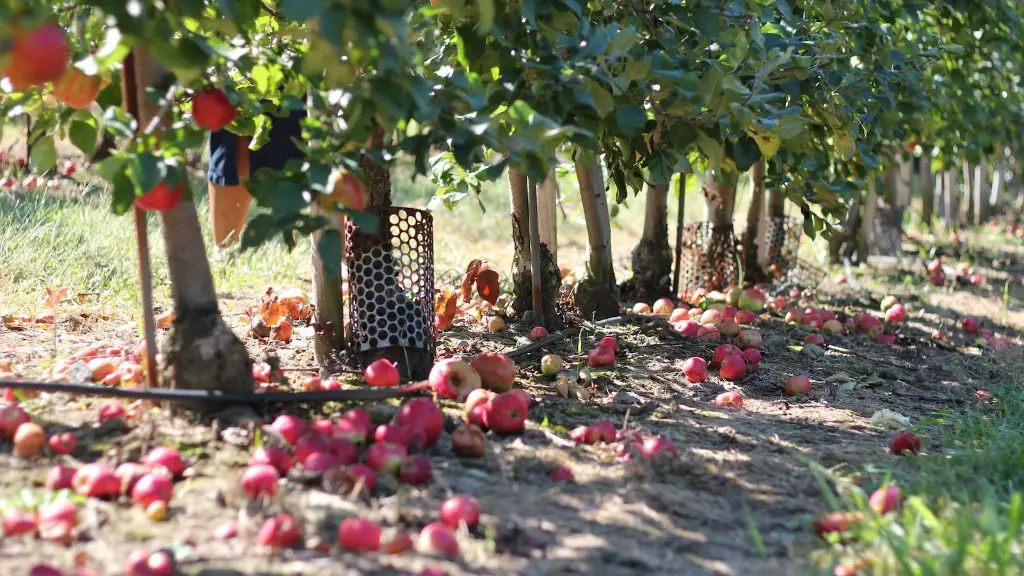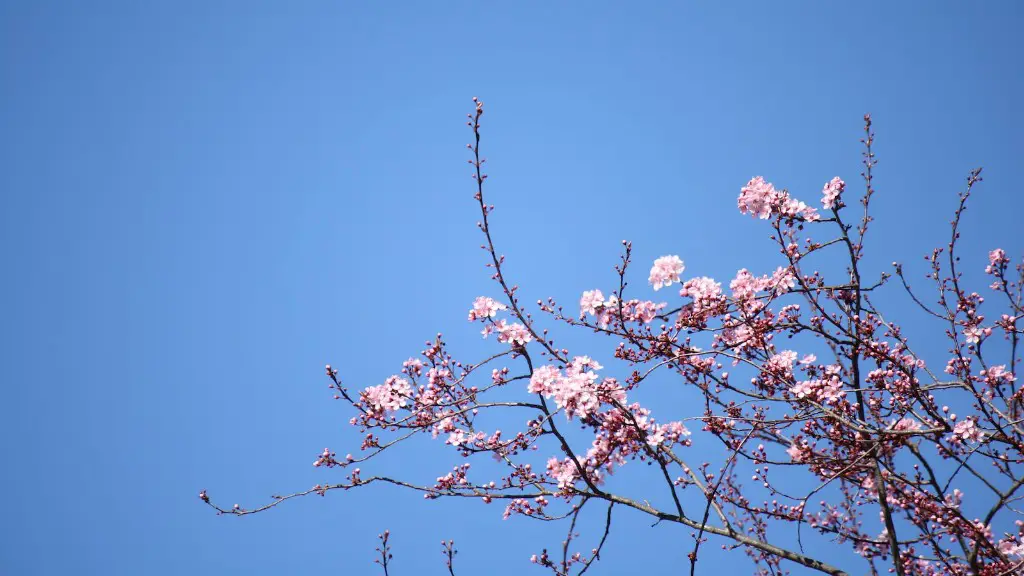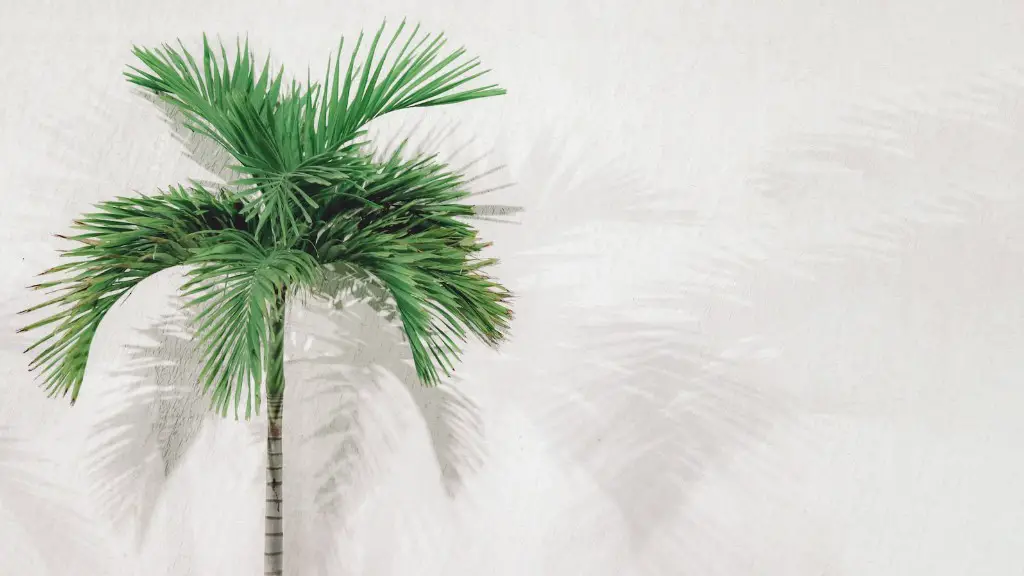What is the White Fuzzy Stuff on My Apple Tree?
The white, fuzzy material found on apple trees is a common issue and most often the result of either a pest or fungal disease. It is important to determine precisely what it is to prevent the spread of further damage.The first step is to determine what type of fruiting or flowering plant it is, since this will better enable the identification of the cause of the material. In apple trees, common pests and fungal diseases both produce a similar white, fuzzy material known as honeydew.
Honeydew is excreted by aphids, scale insects, whiteflies, and mealybugs as a result of their feeding on the tree’s sap. The amount of honeydew produced can be extensive, which will result in a white, fuzzy growth on the leaves and branches. If the tree is infested with these pests, you will often see a black, sticky material on the leaves and branches. This is known as the sooty mold fungus.
The presence of sooty mold fungus is one of the most common signs of an infestation. Once the tree is infested, it is important to take steps to control the spread of the fungus and the pests. Some of these steps involve spraying the tree with insecticides, pruning the infected branches, and monitoring the tree closely. If the infestation is severe, it may be necessary to hire an arborist to treat the infestation.
While pest infestations are one of the most common causes of a white, fuzzy substance on apple trees, there are also other possible causes. A fungal disease called powdery mildew can also cause a whitish, fuzzy growth on leaves, branches, and the fruit of the tree. The fungus can spread quickly, so treating the tree with a fungicide as soon as possible is key.
In addition, apple trees can also suffer from a bacterial disease known as scab. This disease presents with a white, slightly scab-like material on the fruit, as well as a rough, scaly appearance on the leaves. Treatment for scab involves regular spraying with a copper-based fungicide. Finally, there may be other bugs or pests, such as aphids and caterpillars, that cause damage to apple trees which could result in the formation of white, fuzzy material.
In conclusion, the white, fuzzy material on an apple tree can have a variety of causes, and it’s important to accurately identify the issue in order to treat it. Most often, the cause is either a pest infestation or a fungal disease. Treatment usually involves spraying the tree with insecticides or fungicides, or hiring an arborist to treat the infestation.
Types of Pest Infestations
Pest infestations can cause a white, fuzzy material to form on apple trees, and there are a few different types of pests that can cause this. Aphids, for example, are small insects about the size of a pinhead, and they feed on the sap of the tree. These small pests release a sticky substance known as honeydew, which can result in the formation of a white, fuzzy material on the leaves and branches of the apple tree. In addition, whiteflies, scale insects, and mealybugs can all feed on the tree’s sap and excrete the same honeydew material.
In addition, pests like caterpillars and leafhoppers can also cause damage to the tree which can result in a white, fuzzy material. Caterpillars feed on the leaves and branches, creating small holes and causing an increase in fungal disease. Leafhoppers feed on the leaf sap, and can cause yellowing of the leaves and the formation of webs on the bark.
The best way to control pest infestations on apple trees is to keep an eye out for signs of damage, such as holes in the leaves, webs on the bark, or a white, fuzzy material on the leaves and branches. Pruning the affected branches and regularly spraying the tree with insecticides can help to control the infestation.
Types of Fungal Diseases
Fungal diseases often manifest as a white, fuzzy material on apple trees, and the most common are powdery mildew and scab. Powdery mildew is caused by a fungal organism, and it appears as a white or gray coating on the leaves, branches, and sometimes fruit of the apple tree. Scab is another fungal disorder which is characterized by a scaly, slightly scab-like coating on the fruit, as well as yellowing and dropping of the leaves.
The best way to treat and prevent fungal diseases on apple trees is to regularly spray the tree with a fungicide. Copper-based fungicides are particularly effective against scab, while some other fungicides are specifically designed to treat powdery mildew. Additionally, pruning the affected branches and avoiding wetting the leaves when watering can help to reduce the spread of the fungal disease.
Preventative Measures to Avoid White Fuzzy Material
The best way to prevent and control white, fuzzy material on apple trees is to practice good cultural practices. Cleaning up and removing fallen or rotting fruit can help to reduce the spread of disease and pests, as this is a common source of pests and fungal organisms. In addition, making sure the tree gets a sufficient amount of sunlight and air circulation can help to keep it healthy and reduce the potential for infection.
It is also important to water the tree properly, as over-watering can lead to an increase in fungal infection. Make sure to water at the base of the tree and avoid wetting the leaves, as this can create an environment that is conducive to the growth and spread of fungal diseases. Also, regular pruning and monitoring of the tree for signs of damage, discoloration, and white, fuzzy material can help to diagnose and prevent an infestation.
Solutions for Eradicating White Fuzzy Material
If the white, fuzzy material is the result of a fungal disease or a pest infestation, there are several solutions that can be used to treat and eradicate the issue. As mentioned previously, one of the most effective treatments is to regularly spray the tree with insecticides or fungicides to kill the pests and/or the fungus. Pruning the affected branches can also help to get rid of the pests and fungus on the tree.
In addition, some home gardeners resort to biological control methods such as introducing natural predators. Natural predators such as ladybugs and lacewings can be released into the garden to feed on the pests and help to reduce their population. Finally, an application of horticultural oil may help to reduce the population of pests and provide a protective coating on the tree.
Treatment After Diagnosis
Once the cause of the white, fuzzy material has been identified, it is important to take the necessary steps to eradicate the problem. If the cause of the material is a pest infestation, it is important to spray the tree with insecticides, prune the affected branches, and monitor the tree closely. If the material is from a fungal disease, spraying the tree with a fungicide can help to prevent the spread of the fungus.
Finally, as a preventative measure, gardeners can help reduce the potential for a pest or fungal infestation by practicing good cultural practices such as cleaning up and removing fallen or rotting fruit, making sure the tree gets a sufficient amount of sunlight and air circulation, pruning the affected branches, and avoiding wetting the leaves when watering.



